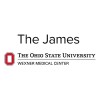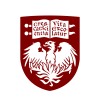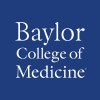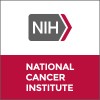
Romidepsin Maintenance After Allogeneic Stem Cell Transplantation
Cutaneous T-cell LymphomaT-Prolymphocytic Leukemia3 moreThe goal of this clinical research study is to learn if giving romidepsin before and after a stem cell transplant in combination with fludarabine and busulfan can help to control leukemia or lymphoma. Researchers also want to learn the highest tolerable dose of romidepsin that can be given with this combination. The safety of this combination and the safety of giving romidepsin after a stem cell transplant will also be studied. This is an investigational study. Romidepsin is FDA approved and commercially available for the treatment of CTCL in patients who have received at least 1 systemic (affecting the whole body) therapy before. Busulfan and fludarabine are FDA approved and commercially available for use with a stem cell transplant. The use of the combination of romidepsin, busulfan, and fludarabine to treat the type of leukemia or lymphoma you have is considered investigational. Up to 30 participants will be enrolled in this study. All will take part at MD Anderson.

Pilot Study of Pembrolizumab Treatment for Disease Relapse After Allogeneic Stem Cell Transplantation...
Classical Hodgkin LymphomaB-cell Non-Hodgkin Lymphoma2 moreThis pilot study has been designed to investigate the safety of pembrolizumab treatment for disease relapse following allogeneic stem cell transplant (alloSCT). Pembrolizumab will be administered at a fixed dose of 200 mg IV every 3 weeks. Approximately 12-26 patients with relapsed MDS, AML, or mature B cell (B-NHL, cHL) malignancies that have relapsed following alloSCT will be enrolled on this trial. Pembrolizumab treatment will be administered for up to 24 months, provided that neither disease progression, nor development of a dose-limiting toxicity (DLT), has occurred. Adverse events will be monitored every three weeks throughout the trial and graded in severity according to the guidelines outlined in the NCI Common Terminology Criteria for Adverse Events (CTCAE) version 4.0. This trial will be conducted in accordance with Good Clinical Practices.

Selinexor Plus Combination Chemotherapy in Treating Patients With Advanced B Cell Non-Hodgkin Lymphoma...
Diffuse Large B-Cell LymphomaRecurrent B-Cell Non-Hodgkin Lymphoma13 moreThis phase Ib/II trial is aimed at studying the combination of a drug named Selinexor (selective inhibitor of nuclear export) in combination with standard therapy for B cell Non-Hodgkin's lymphoma called R-CHOP. The investigators will establish maximum tolerated dose of Selinexor in combination with RCHOP and also study the efficacy of this combination for therapy of B cell Non-Hodgkin's lymphoma. Giving Selinexor plus chemotherapy may work better in treating patients with B cell non-Hodgkin lymphoma.

A Phase I/II Study to Evaluate the Safety of Cellular Immunotherapy Using Autologous T Cells Engineered...
Recurrent B-Cell Non-Hodgkin LymphomaRecurrent Chronic Lymphocytic Leukemia21 moreThe purpose of this research is to find the best dose of genetically modified T-cells, to study the safety of this treatment, and to see how well it works in treating patients with B cell non-Hodgkin lymphoma that has come back (relapsed) or did not respond to previous treatment (refractory).

Obinutuzumab and Ibrutinib as Front Line Therapy in Treating Patients With Indolent Non-Hodgkin's...
Non-Hodgkin's LymphomaAnn Arbor Stage II Extranodal Marginal Zone Lymphoma of Mucosa-Associated Lymphoid Tissue17 moreThis phase II trial studies how well obinutuzumab and ibrutinib work as front line therapy in treating patients with indolent non-Hodgkin's lymphoma. Monoclonal antibodies, such as obinutuzumab, may interfere with the ability of cancer cells to grow and spread. Ibrutinib may stop the growth of cancer cells by blocking some of the enzymes needed for cell growth. Giving obinutuzumab and ibrutinib may work better in treating patients with non-Hodgkin's lymphomas.

A(B)VD Followed by Nivolumab as Frontline Therapy for Higher Risk Patients With Classical Hodgkin...
Hodgkin LymphomaThe aim of this study is to improve the chance of cure for people with higher risk Hodgkin lymphoma. The purpose of the Phase I study is to test any good and bad effects of the study drug called Nivolumab when combined with ABVD for the front-line treatment of HL.The purpose of this Phase II study is to test whether including nivolumab in treatment for untreated Hodgkin lymphoma can improve the chance of cure for patients with abnormal PET scans after 2 cycles of ABVD.

Autologous T-Cells Expressing a Second Generation CAR for Treatment of T-Cell Malignancies Expressing...
T-cell Acute Lymphoblastic LymphomaT-non-Hodgkin Lymphoma1 morePatients eligible for this study have a type of blood cancer called T-cell leukemia or lymphoma (lymph gland cancer). The body has different ways of fighting infection and disease. No one way seems perfect for fighting cancers. This research study combines two different ways of fighting disease, antibodies and T cells, hoping that they will work together. Antibodies are types of proteins that protect the body from bacterial and other diseases. T cells, also called T lymphocytes, are special infection-fighting blood cells that can kill other cells including tumor cells. Both antibodies and T cells have been used to treat patients with cancers; they have shown promise, but have not been strong enough to cure most patients. T lymphocytes can kill tumor cells but there normally are not enough of them to kill all the tumor cells. Some researchers have taken T cells from a person's blood, grown more of them in the laboratory and then given them back to the person. In some patients who have recently had a bone marrow or stem cell transplant, the number of T cells in their blood may not be enough to grow in the laboratory. In this situation, T cells may be collected from their previous transplant donor, who has a similar tissue type. The antibody used in this study is called anti-CD5. It first came from mice that have developed immunity to human leukemia. This antibody sticks to T-cell leukemia or lymphoma cells because of a substance on the outside of these cells called CD5. CD5 antibodies have been used to treat people with T-cell leukemia and lymphoma. For this study, anti-CD5 has been changed so that instead of floating free in the blood it is now joined to the T cells. When an antibody is joined to a T cell in this way it is called a chimeric receptor. In the laboratory, the investigators have also found that T cells work better if proteins that stimulate T cells are also added, such as one called CD28. Adding the CD28 makes the cells grow better and last longer in the body, thus giving the cells a better chance of killing the leukemia or lymphoma cells. In this study investigators are going to attach the CD5 chimeric receptor with CD28 added to it to the patient's T cells or the previous bone marrow transplant donor's T cells. The investigators will then test how long the cells last. The decision to use the bone marrow transplant donor's T cells instead of the patient's will be based on 1) whether there is an available and willing donor and 2) the likelihood of the patient's T cells being able to grow in the lab. These CD5 chimeric receptor T cells with CD28 are investigational products not approved by the Food and Drug Administration.

Inotuzumab Ozogamicin Post-Transplant For Acute Lymphocytic Leukemia and Non-Hodgkin's Lymphoma...
Acute Lymphocytic LeukemiaNon-Hodgkin's LymphomaThis study has two phases, Phase I and Phase II. The main goal of the Phase I portion of this research study is to see what doses post-transplant inotuzumab ozogamicin can safely be given to subjects without having too many side effects. The Phase II portion of this study is to see what side effects are seen with medication after transplant. Inotuzumab ozogamicin is a combination of an antibody and chemotherapy which has been shown to have significant activity against relapsed/refractory acute lymphocytic leukemia (ALL) and Non-Hodgkin's Lymphoma (NHL). Inotuzumab ozogamicin is considered experimental in this study.

First-line Antibiotic Therapy for Early-stage HP(+) Gastric Pure DLBCL
Gastric Diffuse Large B-cell LymphomaAims: A nationwide study to prospectively validate The complete histological and molecular remission rate for antibiotics as 1st-line therapy for early-stage Hp-positive gastric pure (de novo) DLBCL The durability of complete histological remission after antibiotics The usefulness of pattern of NF-kB, BCL10, BAFF, and CagA by IHC staining in prospectively predicting the Hp-dependence of gastric pure (de novo) DLBCL The frequency of t(11;18)(q21;q21) translocation in gastric pure (de novo) DLBCL in Taiwan. The association between the CYP2C18/CYP2C19 genetic polymorphisms and eradication of Hp infection after antibiotics.

Lenalidomide Combined With Modified DA-EPOCH and Rituximab (EPOCH-R2) in Primary Effusion Lymphoma...
Primary Effusion LymphomaB-Cell NeoplasmBackground: Primary effusion lymphoma (PEL) is a rare disease with no standard treatment. Researchers want to see if a drug called lenalidomide along with common chemotherapy drugs may be effective in treating PEL. Objective: To test a new treatment for PEL. Eligibility: People ages 18 and older with PEL. Design: Participants will be screened with blood tests, imaging studies, a physical exam, and other tests. Participants will have tests to evaluate their disease. These may include: Blood tests Scans Lumbar puncture. Fluid around the spinal cord will be removed with a needle. Bone marrow removed with a needle and studied Samples of skin or lymph nodes removed Fluid removed from around organs Lung and eye tests Tubes with cameras taking pictures of airways or digestive tract Participants will take lenalidomide pills for 10 days. They will keep a pill diary. Participants will have a catheter (small tube) placed in the large vein in the arm or chest. Participants will get DA-EPOCH-R as intravenous infusions by catheter over several days. This will be repeated in 21-day cycles. Most participants will have 6 cycles. Participants will get the drug filgrastim by injection under the skin. They will get the drug methotrexate injected into the spinal fluid. During the study, participants will have the following tests done at least once: Medical history Physical exam Blood, urine, and stool tests Lesions photographed and measured Lumbar puncture Participants will have follow-up visits for 5 years. They will repeat the screening tests plus have urine and stool tested. Participants may be contacted later by phone to see how they are doing.
